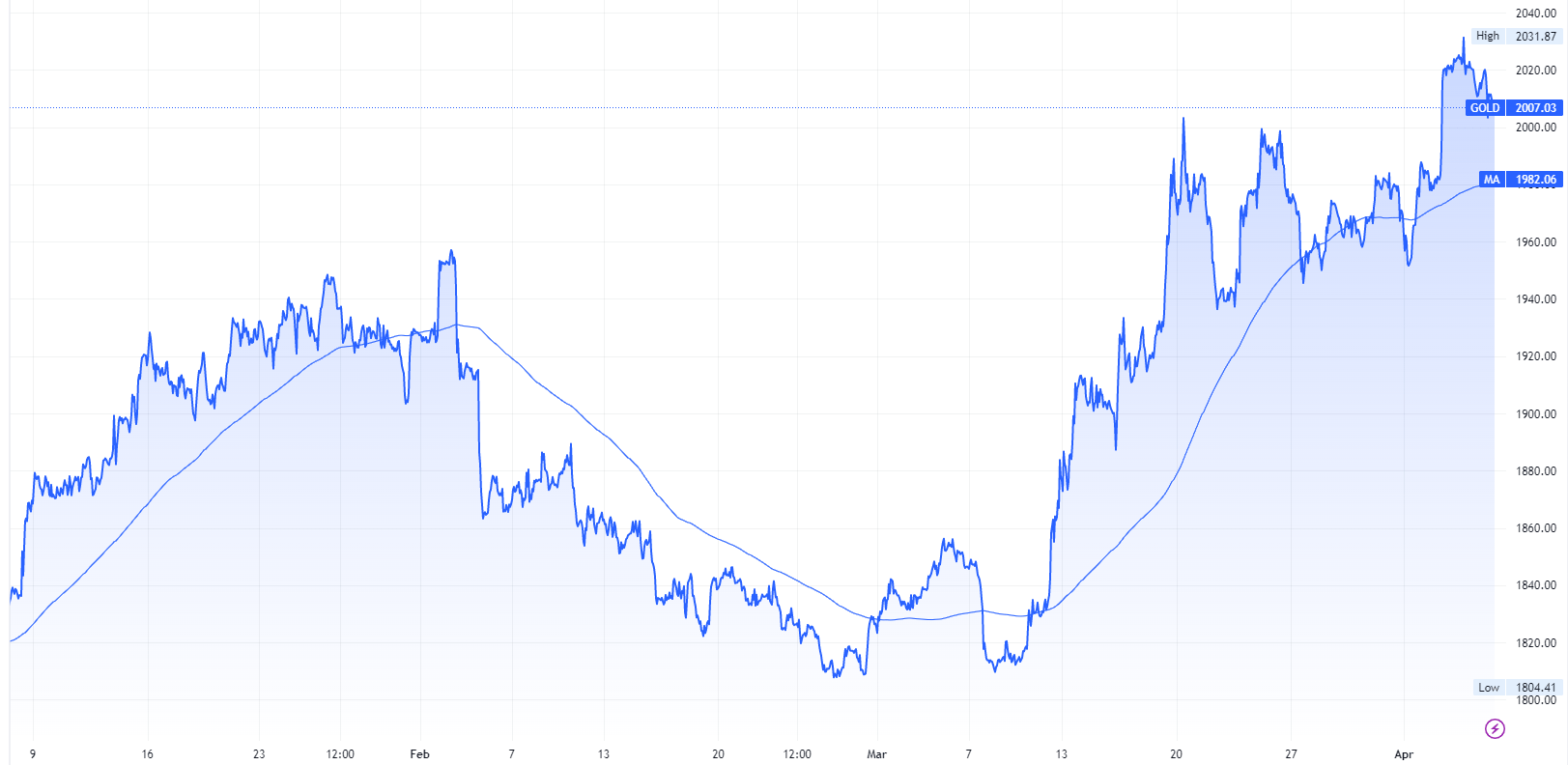Gold Weekly Technical Analysis: Record Close Above US$2,000
Gold prices ended the week with a record close above $2,000 for the first time ever, marking an important milestone for the precious metal. In this weekly forecast, we'll explore the factors that contributed to this achievement and the events that could impact the price of gold in the week ahead.
What Happened Last Week?
Gold prices surged last week, with XAU/USD gaining traction to start the week and extending its rally after clearing $2,000. Although the pair retreated in the second half of the week from the one-year high it touched above $2,030, it still managed to snap a two-week losing streak and post its first weekly close above $2,000.
The US Dollar came under selling pressure in the American session after the monthly PMI report published by the ISM revealed that the economic activity in the manufacturing sector continued to contract at an accelerating pace in March. Additionally, the inflation component of the survey, the Prices Paid sub-index, and the Employment sub-index both came in below 50, showing a decline in the sector's input inflation employment. XAU/USD capitalised on the USD weakness and registered daily gains.
On Tuesday, gold prices gathered bullish momentum and surpassed $2,000. Technical buyers showed interest following this move, and XAU/USD rose nearly 2% on a daily basis. The sharp decline seen in the benchmark 10-year US Treasury bond yield fueled the pair's rally. However, gold price struggled to preserve its bullish momentum on Wednesday, closing the day flat despite reaching its highest level since March 2022 at $2,032. Despite the disappointing ISM Services PMI report, which highlighted a loss of momentum in the service sector's business growth, the USD found a foothold amid risk aversion.
Gold price staged a technical correction on Thursday as the 10-year US Treasury bond yield recovered above 3.3% from the multi-month low it set at 3.25% earlier in the week. The US Department of Labor (DOL) announced that there were 228,000 initial jobless claims in the week ending April 1, compared to the market expectation of 200,000. The DOL, however, noted that they have revised seasonal adjustment factors, and markets refrained from reacting to this data.
On Friday, the BLS reported that Nonfarm Payrolls (NFP) rose by 236,000 in March, and the Unemployment Rate declined to 3.5% on the back of an increase to 62.6% in the Labour Force Participation rate. Furthermore, wage inflation, as measured by Average Hourly Earnings, declined to 4.2% on a yearly basis from 4.6% in February. With the initial reaction to this data, the 10-year US yield gained more than 1% in the shortened session.
What to Expect in the Week Ahead?
Many major global and stock markets will remain closed on Easter Monday, and XAU/USD is likely to stay quiet at the beginning of the week. However, late Monday or early Tuesday, a delayed reaction to the US March jobs report could be witnessed, with trading volumes returning to normal levels.
Improving Labor Force Participation Rate, falling wage inflation, and the loss of momentum in NFP growth, which all point to softening conditions in the labour market, could translate into lower US yields and allow Gold price to gain traction. However, it's worth remembering the uptick in yields on Friday. Markets could still see that report as "good enough" to constitute one more Fed rate increase in May. In that case, an extended rebound in yields should cap XAU/USD's upside.
Gold continues to recommend a “Strong Buy” signal over a daily, weekly, and monthly period.
The bullish bias stays intact in the near-term technical outlook as XAU/USD has been trading above the 200-day Simple Moving Averages (SMA). The Relative Strength Index (RSI) has entered the overbought region, but it has not shown any bearish divergence yet.

Source: TradingView.
Disclaimer
Please note that past performance does not guarantee future results. This news and any links provided are for general information only and should not be taken as constituting professional advice from Jaggards.
Jaggards is not a financial adviser. We recommend you seek independent financial advice before making any financial decisions based on the information contained in this article.

